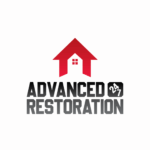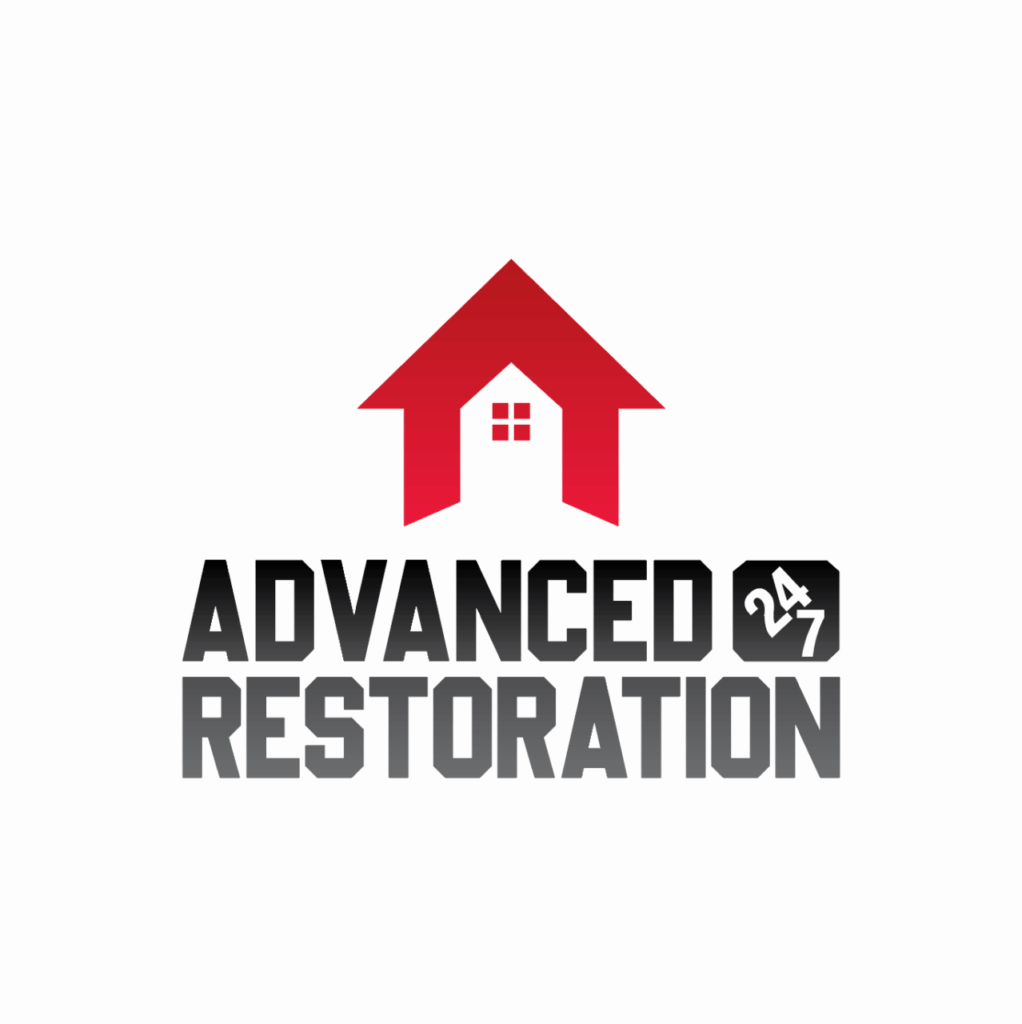Water damage can be devastating, wreaking havoc on homes and businesses. This comprehensive guide will explore the ins and outs of water damage restoration, shedding light on its impact, the meticulous restoration process, and crucial factors to consider when choosing a restoration company like Advanced 24/7 Restoration. We’ll also delve into the importance of following a timely water damage restoration protocol, the risks of delays, and proactive measures to prevent further damage.
Understanding Water Damage and Its Impact
Water Damage Restoration, whether from a burst pipe, flooding, or a leaky roof, can cause extensive harm. It compromises the structural integrity of a building and poses health risks due to mold growth and contaminated water. Quick and effective restoration is essential to mitigate these impacts.
A Detailed Step-by-Step Guide to Water Damage Restoration
- Assessment: Professionals assess the extent of the damage, categorize it (clean, gray, or black water), and develop a restoration plan.
- Water Extraction: The first step is to remove excess water using powerful pumps and vacuums.
- Drying and Dehumidification: Industrial-grade dehumidifiers and air movers thoroughly dry the affected areas, preventing mold growth.
- Cleaning and Sanitizing: Surfaces and belongings are disinfected to ensure a safe environment.
- Repair and Restoration: This step involves repairing or replacing damaged materials like drywall, insulation, or flooring.
- Final Inspection: A comprehensive inspection ensures the restoration is complete and up to industry standards.
What to Look for in a Water Damage Restoration Company
Choosing the right restoration company is paramount to a successful outcome. Consider these factors:
- Qualifications and Experience: Ensure the company holds relevant certifications and has extensive experience in water damage restoration.
- Technician Expertise: Technicians should be trained, certified, and knowledgeable about the latest restoration techniques.
- Materials and Equipment: High-quality materials and cutting-edge equipment are essential for effective restoration.
- Reputation: Research online reviews and ask for references to gauge the company’s reputation and the quality of their work.
- Response Time: A prompt response to your call signifies a company’s commitment to mitigating damage.
Mitigating Mold Growth and Health Risks
The moment water infiltrates your home or business, the clock starts ticking. Within the first 24 to 48 hours, mold spores can begin to develop and proliferate. Mold damages your property further and poses severe health risks to occupants.
Mold-related health issues range from mild allergies to more severe respiratory problems, and individuals with compromised immune systems can face even greater health risks. Prolonged exposure to mold can lead to chronic health conditions, making immediate remediation a critical step in safeguarding the well-being of those who inhabit the affected space.
Preventing Structural Damage
Structural damage is another significant concern when restoration is delayed. Water has a destructive impact on building materials such as drywall, insulation, and wooden structures. Over time, this structural damage can become extensive and costly to repair. What might have initially been a minor issue can rapidly escalate into a major renovation project.
The structural integrity of your property is compromised as water gradually weakens essential components. Walls may become unstable, ceilings could sag, and floors may warp. These issues pose safety hazards and lead to substantial repair expenses.
Minimizing Financial Costs and Insurance Considerations
Financially, delaying restoration often leads to increased expenses. The longer water damage is left unaddressed, the more extensive the repairs become. Insurance companies may also be less willing to cover the costs if they believe the homeowner or business owner did not take reasonable steps to mitigate the damage promptly.
Insurance providers emphasize the importance of mitigating damage promptly to limit their liability. Delaying restoration can be perceived as negligence, potentially leading to denied claims or reduced payouts. By acting swiftly, you protect your property and health and improve the chances of a smoother claims process.
Prompt water damage restoration is not merely a matter of convenience; it is a critical step in preserving the safety of occupants, preventing extensive structural damage, and minimizing financial costs. When you detect water damage, contacting a reputable restoration company like Advanced 24/7 Restoration without delay becomes imperative. Doing so proactively addresses the root causes of these potential long-term consequences, ensuring a safer, structurally sound, and more financially manageable recovery process.
The Risks of Delayed Water Damage Restoration
- Mold and Health Issues: Mold spores can cause respiratory problems and allergies, making timely restoration crucial.
- Structural Damage: Delayed restoration may require extensive repairs, driving up costs.
- Contamination: Water can carry contaminants, making it important to restore quickly to prevent further contamination.
How to Prevent Further Damage
- Stop the Water Source: If possible, shut off the water source to prevent additional flooding.
- Remove Belongings: Safeguard valuables by moving them to a dry area.
- Ensure Safety: Be cautious of electrical hazards and slippery surfaces.
- Contact Professionals: Swiftly call a reputable restoration company to start the restoration process.
Proactive Measures to Prevent Water Damage
- Regular Inspections: Periodically inspect your property for signs of leaks, water intrusion, or weakened structures.
- Gutter Maintenance: Keep gutters and downspouts clean to ensure proper water drainage.
- Seal Cracks: Seal any cracks or gaps in your property’s foundation or walls to prevent water entry.
- Landscaping: Proper landscaping and grading can direct water away from your home or business.
- Install a Sump Pump: Installing a sump pump in your basement can prevent flooding during heavy rainfall.
Understanding Insurance Coverage
Understanding your insurance coverage in the context of water damage is essential to ensure you’re adequately protected. Insurance policies can vary significantly, so it’s crucial to review your policy carefully and consider the following factors:
- Policy Type: Your insurance policy type matters. Homeowners’ insurance and flood insurance are not the same. While homeowners’ insurance typically covers water damage resulting from sudden and accidental events (like a burst pipe), flood insurance is necessary for protection against flood-related damage.
- Coverage Limits: Assess your policy’s coverage limits. Some policies may have specific limits for water damage, which may not cover the full restoration cost. Evaluate whether you need additional endorsements or a higher coverage limit.
- Deductibles: Determine your policy’s deductible, the amount you must pay out of pocket before your insurance coverage kicks in. Ensure this deductible aligns with your financial capabilities.
- Exclusions: Carefully read through the policy’s exclusions. Some insurance policies may exclude certain types of water damage, such as damage caused by neglect or lack of maintenance.
- Endorsements: Consider adding endorsements or riders to your policy if necessary. For instance, a separate flood insurance policy may be required if you live in an area prone to flooding.
- Documentation: Keep thorough records of the damage, including photographs and written descriptions. Documenting the damage can help streamline the claims process and ensure you receive the appropriate compensation.
Understanding your insurance coverage is vital to avoiding surprises when filing a claim. If you have questions or concerns about your policy, don’t hesitate to consult with your insurance agent or broker. Being well-informed about your coverage can make the difference between a smooth claims process and financial hardship during restoration.
The Role of Restoration Professionals in Mold Prevention
Restoration professionals play a pivotal role in addressing immediate water damage and preventing mold growth, which can be a serious consequence of water infiltration. Here’s how they contribute to mold prevention:
- Rapid Response: Restoration professionals understand the urgency of water damage. They promptly assess the situation and initiate water extraction and drying processes. This swift action is crucial in preventing mold growth, as mold can begin to develop within 24 to 48 hours of water exposure.
- Thorough Drying: Effective drying and dehumidification are key components of mold prevention. Restoration experts utilize industrial-grade dehumidifiers and air movers to remove moisture from affected areas, ensuring no lingering moisture.
- Professional Expertise: Restoration technicians are trained and certified in mold prevention and remediation. They have the knowledge and experience to identify potential areas of concern and take proactive steps to prevent mold from taking hold.
- Disinfection and Cleaning: Restoration professionals thoroughly clean and disinfect affected surfaces and materials. This not only removes contaminants but also inhibits mold growth.
- Regular Monitoring: After the initial restoration, professionals may continue to monitor humidity levels and assess for any signs of mold development. This ongoing vigilance ensures that your property remains mold-free.
By addressing these factors, restoration professionals are instrumental in mold prevention. Their expertise, equipment, and commitment to thorough restoration significantly reduce the risk of mold-related issues, safeguarding your property and health.
The Benefits of Eco-Friendly Restoration
Opting for eco-friendly restoration practices offers several advantages beyond just mitigating water damage:
- Healthier Indoor Environment: Eco-friendly restoration methods prioritize using non-toxic, environmentally safe products. This protects the environment and ensures the safety and health of occupants. Traditional restoration materials and chemicals can release harmful fumes and contribute to indoor air pollution, whereas eco-friendly options do not.
- Reduced Environmental Impact: Conventional restoration often involves the disposal of large quantities of damaged materials, contributing to landfill waste. Eco-friendly restoration focuses on restoration and salvaging rather than replacement, minimizing waste and the associated environmental impact.
- Sustainability: Eco-friendly restoration promotes the use of sustainable materials and practices. For example, damaged wooden flooring might be refinished instead of replaced, reducing the demand for new resources.
- Energy Efficiency: Eco-friendly restoration also considers energy efficiency. This includes optimizing insulation, sealing gaps, and using energy-efficient appliances and fixtures during restoration. These measures not only reduce energy consumption but also lower utility bills.
- Long-Term Cost Savings: While eco-friendly restoration materials and practices may initially appear more expensive, they often provide long-term cost savings. Energy-efficient upgrades can lead to reduced energy bills, and the longevity of restored materials can postpone the need for replacements.
- Environmental Responsibility: Choosing eco-friendly restoration demonstrates a commitment to environmental responsibility. It aligns with sustainability principles and contributes to a greener, more eco-conscious future.
Emerging Stronger: Navigating the Waters of Water Damage Restoration
Water damage can be a relentless adversary but with the right protocol and a qualified restoration team, your home or business can be restored to its former glory. By understanding the restoration process, selecting the right professionals, acting promptly, and taking proactive measures, you protect your property and safeguard the health and well-being of those who inhabit it.
Don’t underestimate the power of water – take action, restore, and regain control over your environment. With these measures in place, you can confidently navigate the challenges of water damage and emerge stronger than before.
In the face of water damage, whether in your home or business, the importance of swift and professional restoration cannot be overstated. At Advanced 24/7 Restoration, we are your trusted partner in safeguarding your property and peace of mind. Our seasoned experts, equipped with cutting-edge technology and a commitment to excellence, are ready to restore your space to its former glory.
Don’t let water damage dictate your life—take control by choosing Advanced 24/7 Restoration. Contact us today, and let us help you emerge from the challenges of water damage in Denver stronger, safer, and more resilient than ever. Your property deserves nothing less than the very best, and that’s precisely what we deliver.
Advanced 24/7 Restoration’s mission is to provide unparalleled care and support to our valued clients. Delivering the best solutions for your property restoration needs. Our vision is to be the top-rated damage restoration company in Denver, known for our exceptional services, professionalism, and dedication to customer satisfaction. Water damage, fire damage, flood damage, and more.
- This author does not have any more posts


